





| Australian Yowie Research Centre First Est...in 1965 as an Idea by Rex Gilroy for the Sole purpose of Scientific Study of the Australian Hairy man |
 |
 |
  |
 |
 |
| Australian Yowie Research Centre Est...1972 by Rex Gilroy at his Home for the sole purpose of Scientific Study of the Australian Hairy man | ||||
Aboriginal Traditions - Myths and Legends © Rex Gilroy
|
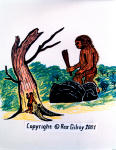 Yowie Introduction |
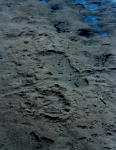 Yowie Tracks |
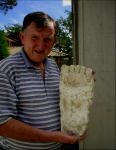 Yowie Expeditions |
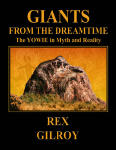 Yowie Book 2001 |
 Yowie Book 2007 |
|
Aboriginal Traditions - Myths and Legends cont...
|
 Early Accounts |
 Settler Accounts |
 Modern Reports |
 Recent Reports |
 Yowie Exhibition |
|
 Fossil Footprints |
 Aboriginal Art |
 Descriptions |
 Homo erectus |
 Relict Hominids |
|
Comparison's With Other Relict Hominid's
|
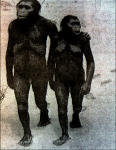 |
 |
 |
 |
 |
Australian Yowie Research Centre Files In the following years Following World War One, there were still a few old men and woman living in the hornsby districts, who repeated tales of 'hairy man' encounters in the area generations before, such as one account of two men having shot dead a 'hairy man' almost twice the height of an average human, that approached then from out of nearby scrub, about the year 1800; and that a 'Yahoo' was shot dead by soldiers in the same area about 1822 |
 |
 |
 |
 |
 |
Australian Yowie Research Centre Files About 1895, one of the last of the Aborigines of the Blue Mountains, who were an offshoot of the old Mulgoa and Burragorang tribes, declared there was a Yowie living in the neighbourhood of the 'Devils hole' near Narrow neck, Katoomba. He even volunteered to take a European aquaintance to the exact place and there leave him to interview the creature at leisure, but the offer was declined. |
Comparison's With Other Relict Hominid's cont... American professor Grover T Krantz, (Grover has since died R.I.P) anthropologist of Washington State University, has from exhaustive studies and comparisons of what he considered to be authentic footprint plaster casts of 'Bigfoot', concluded that the creature may be a living representative of Gigantopithecus. Gigantopithecus is known only from its fossilised jaws and teeth, and thought to have existed in Asia from about five million years ago. The great size of its fossil jaw suggests Gigantopithecus reached a height of around 3 metres. Despite widespread scientific opinion that Gigantopithecus would have walked on its knuckles, like a gorilla, and not on its two feet, Professor Krantz has made a convincing argument based on the spread of the lower jaw, that Gigantopithecus was actually an erect biped. "If you change a gorilla to a vertical posture like a human, and make the neck come straight down, one thing you have to do is spread the back of its lower jaw room for the neck. And as can be shown, the lower jaw of Gigantopithecus spread much more widely than the jaw of a gorilla." "Gigantopithecus was so much like the Sasquatch that I would assume Gigantopithecus is alive today", says Krantz. |
 |
 |
 |
 |
 |
Australian Yowie Research Centre Gigantopithecus, the 'South China Giant", originally identified from six large fossil teeth found in a Hong Kong Chinese chemist's shop by Dutch Paleontologist Ralph von Koenigswald in 1934, does appear to fit the description of the Sasquatch. |
 |
 |
 |
 |
 |
Australian Yowie Research Centre Fossil jaws and teeth of Gigantopithecus unearthed in China since von Koenigswald's initial discovery show these monster-apes subsisted on seeds, berries and other herbivorous food, although there must have been meat-eating forms, as suggested by the Australian Aboriginal traditions, concerning the habits of the giant hominids (of Gigantopithecus appearance) |
New Zealand Evidence
|
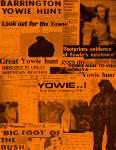 Newspaper Images |
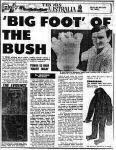 Newspaper Articles |
 Message Board |
 Magazine Articles |
 Press Releases |
Australian Yowie Research Centre
|
 |
 |
 |
 |
 |
Australian Yowie Research Centre
|
| Australian Yowie Research Centre Est...1976 Publicly by Rex Gilroy for the sole purpose of Scientific Study of the Australian Hairy man |
 |
 |
  |
 |
 |
| Australian Yowie Research Centre Est...1976 Publicly by Rex Gilroy for the sole purpose of Scientific Study of the Australian Hairy man | ||||
| To Search this Site TYPE in above search engine | ||||
|